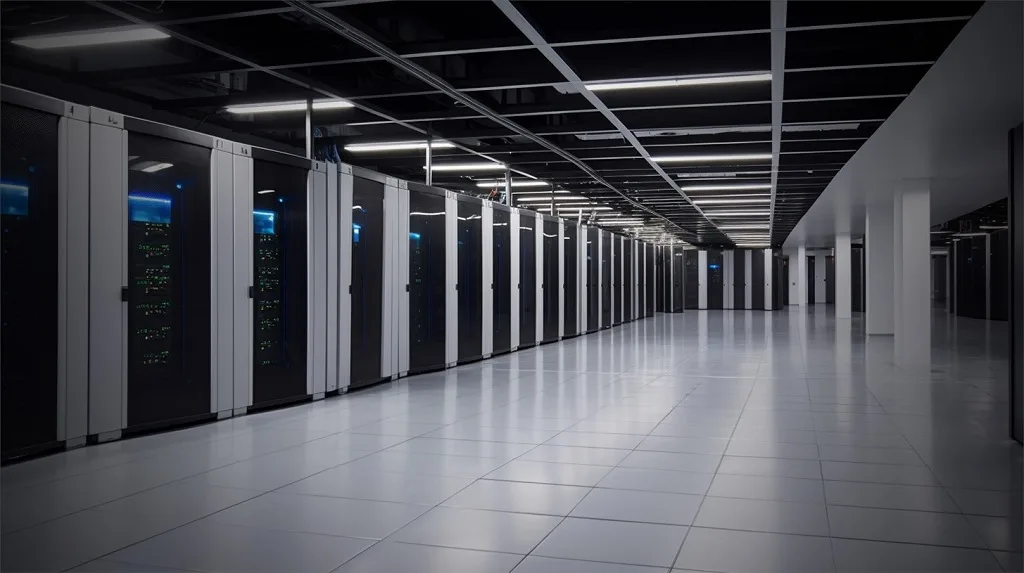The concept of data centers in space is rooted in the ever-increasing demand for data storage and processing capabilities. With the exponential growth of internet usage, cloud computing, and data-driven technologies, terrestrial data centers are struggling to keep up with the demand. This has led to exploring innovative solutions, one of which is the idea of establishing data centers in space. The inspiration for this ambitious idea can be traced back to the need for sustainability and efficiency. Traditional data centers consume enormous amounts of energy for cooling and operations, contributing significantly to global carbon emissions. Space-based data centers offer a unique solution by leveraging the cold vacuum of space for natural cooling, potentially reducing the environmental impact.
The feasibility of this concept is supported by advancements in space technology and decreasing costs of launching payloads into orbit. Companies like SpaceX have revolutionized space travel with reusable rockets, making it more economically viable to consider space as a new frontier for data storage. Furthermore, the development of robust and reliable satellite technology has paved the way for maintaining communication and data transfer between space-based data centers and Earth.
What Problems It Should Solve and the Advantages of This Idea
Space-based data centers are poised to address several critical issues faced by terrestrial counterparts. One of the primary problems is energy consumption. Traditional data centers require extensive cooling systems to manage the heat generated by servers. In space, the naturally cold environment can significantly reduce the need for artificial cooling, leading to substantial energy savings. Additionally, solar panels can be used to harness the abundant energy from the sun, making space-based data centers more sustainable and environmentally friendly.
Another advantage is the reduction of latency in global data transfer. By placing data centers in strategically positioned orbits, data can be accessed and transmitted more quickly across different regions of the world. This is particularly beneficial for applications requiring real-time data processing and low-latency communication, such as financial trading platforms, autonomous vehicles, and telemedicine.
Furthermore, space-based data centers can enhance data security. The physical isolation from Earth reduces the risk of physical attacks and natural disasters. Cybersecurity measures can be augmented with the unique position of these data centers, making them less vulnerable to terrestrial threats. This added layer of security is crucial for sensitive data and critical infrastructure.
First Attempts and First Tests
The initial steps towards realizing space-based data centers have already been taken. Early experiments involve deploying small-scale data storage units on satellites to test the feasibility of operating in the harsh space environment. Companies like Microsoft and IBM are actively researching and developing prototypes to understand the technical challenges and opportunities. For instance, Microsoft’s Project Natick explored underwater data centers, providing valuable insights into alternative cooling methods that can be applied to space.
Recent tests have focused on ensuring the durability and reliability of hardware in space. Components are subjected to extreme conditions, including radiation, vacuum, and microgravity, to evaluate their performance. Successful tests have shown that with proper shielding and design, it is possible to protect data storage devices and maintain their functionality over extended periods.
Another critical aspect of these tests is ensuring seamless data transmission between space-based data centers and Earth. High-speed laser communication systems are being developed to facilitate rapid and reliable data transfer, minimizing the latency and ensuring continuous connectivity. These advancements are crucial for the practical deployment of large-scale space-based data centers.

Are There Any Disadvantages?
Despite the promising advantages, there are significant challenges and disadvantages associated with space-based data centers. One of the primary concerns is the high cost of deployment. Although the cost of launching payloads has decreased, it remains a substantial investment. The initial capital required for building and deploying space-based data centers is considerably higher than traditional data centers, posing a barrier for many organizations.
Another issue is the potential for space debris. The increasing number of satellites and space-based infrastructure raises the risk of collisions and the creation of space debris, which can jeopardize the safety and functionality of data centers in orbit. Effective space traffic management and debris mitigation strategies are essential to address this concern.
Maintenance and repair pose another challenge. Unlike terrestrial data centers, space-based facilities cannot be easily accessed for repairs or upgrades. This necessitates the development of highly reliable and self-sustaining systems, which can operate without frequent human intervention. The cost and complexity of designing such systems add to the overall expense and technical challenge.
Temporary Hype or Promising Idea?
The idea of space-based data centers is not just a passing trend but a promising innovation with the potential to transform data storage and processing. The convergence of technological advancements in space travel, satellite communication, and data center infrastructure creates a conducive environment for this concept to flourish. As the demand for data continues to grow, the limitations of terrestrial data centers become more apparent, highlighting the need for alternative solutions.
However, the realization of space-based data centers will likely be a gradual process. Continued research, development, and testing are necessary to overcome the existing challenges and demonstrate the viability of this concept on a larger scale. Collaboration between private companies, governments, and international organizations will be crucial to address regulatory, financial, and technical hurdles.
In conclusion, space-based data centers represent a forward-thinking approach to addressing the growing demands of data storage and processing. While there are significant challenges to overcome, the potential benefits in terms of energy efficiency, data security, and global connectivity make it a compelling proposition. As technology continues to advance, the dream of data centers in space may soon become a reality, marking a new era in the digital age.

